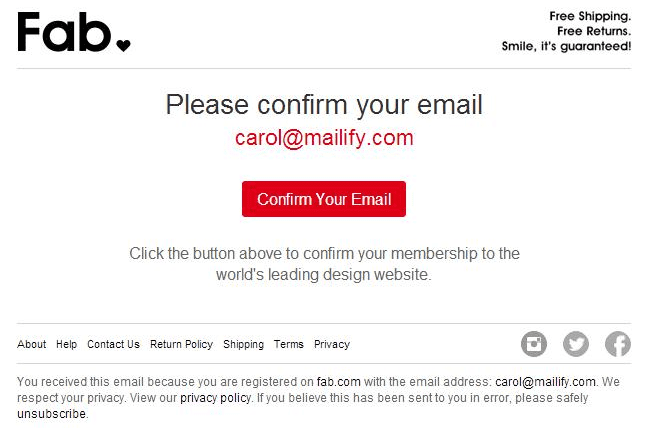Email bounces occur when the emails sent are not delivered to the recipient. Bounce Rate is the metric that indicates how many of your subscribers’ email addresses did not get your message. Mathematically, it’s represented as:
Bounce rate = {(number of emails bounced / number of emails sent) x 100}
There are 2 main types of email bounces: hard bounces and soft bounces.
A soft bounce occurs when the email reaches the inbox, but bounces back before it reaches the recipient. This can happen due to a full mailbox, or has very little storage space.
A hard bounce occurs when the email is returned because the recipient’s address is invalid. It can occur if the domain name is invalid; recipient is unknown or due to a network problem.
Below are some examples of hard bounce codes with the description of the error.
5.1.2 – Bad destination host ‘DNS Hard Error’
550 – No such user – Administrative prohibition
5.1.1- Unknown or illegal alias
5.1.0- Unknown address error
6 Things Email Bounces Teach You
1. Never send over-sized messages
In our globalized multi-device world where attention spans are on a consistent decline and instant gratification is what everyone seeks, oversized messages are unrealistic. Sensitive filters in some inboxes limit the size of messages rendering them to bounce. Make sure your email isn’t too heavy on GIFs, videos, and photos that consume a lot of time in loading, otherwise it can get bounced.
2. Use double opt-in
Always provide double opt-in forms while collecting subscriptions. The subscriber will receive a confirmation email after signing up, which they must click through to validate their email address. This extra step decreases the likelihood of spam email addresses being added to your list of subscribers. The following is an example of a double opt-in email:

Source: Sendinblue
3. Maintain email list hygiene
Maintaining a high-quality email list is essential for avoiding bounces. Look for tools that go beyond list validation and provide useful email list analysis when it comes to email address verification. To avoid hard bounces, always double-check your subscriber lists for mistakes. You can use an email verification tool that uses real-time API verification to validate new subscribers before they’re added to your list to make your email list hygienic to a greater extent.
4. Authenticate your domain & avoid using free ones
Internet service providers (ISPs) like Gmail, Yahoo, and Outlook can better route the origin of your email if you have an authenticated domain, thus, significantly minimizing your email bounces. Also, it’s a good idea to ask your subscribers to add your email address to their inbox address book in addition to validating your domain.
If possible, avoid using free sender domains as they cannot be authenticated.
5. Set up an email strategy based on optimized frequency and timing
Your subscribers may abandon you or stick by based upon the way you communicate with them. Therefore, the quantity of emails you send over a given period of time, the sort of emails you send, and the optimum time period to send your emails, all play a significant role in lowering your bounce rate.
When you and your subscribers communicate frequently, the email service interprets this as an activity of value. On the other hand, subscribers are less likely to forget that they opted in to receive emails if the mailing schedule is constant. Therefore, create a consistent schedule for sending emails so that subscribers and receivers’ servers know what to expect.
6. Track your bounce rates through email analytics
Email analytics is a data-driven method of determining how subscribers interact with an email campaign using a set of metrics and KPIs. Marketers may optimize their bounce rates by evaluating quantitative and qualitative aspects of hard bounces as well as soft bounces based on the huge amount of data gathered via analytics.
All of this data enables for greater insights on the nature and reason of the bounces, resulting in minimized bounce rates and campaigns.
7 Quick Tips to Mitigate Email Bounces
- Check out how your list service vendor handles the bounces.
- With the information from the vendor, check for yourself how many addresses are bouncing and who they are.
- In case of a soft bounce, resend it a few more times before considering it a hard bounce.
- Temporary soft bounces should be attempted again for sending and the same applies for ‘Out of Office’ emails.
- Take at least a month’s time before invalidating any record from your database.
- Connect to prospects through other channels if their email address does not really work.
- Test your email campaigns before starting to send them to the subscribers’ list.
Conclusion
Email bounce backs are undoubtedly irritating and can bring the flow of your marketing to a halt. However, by exercising little caution and strategies, you can surely reduce them to a great extent and ensure the success of your campaigns.


